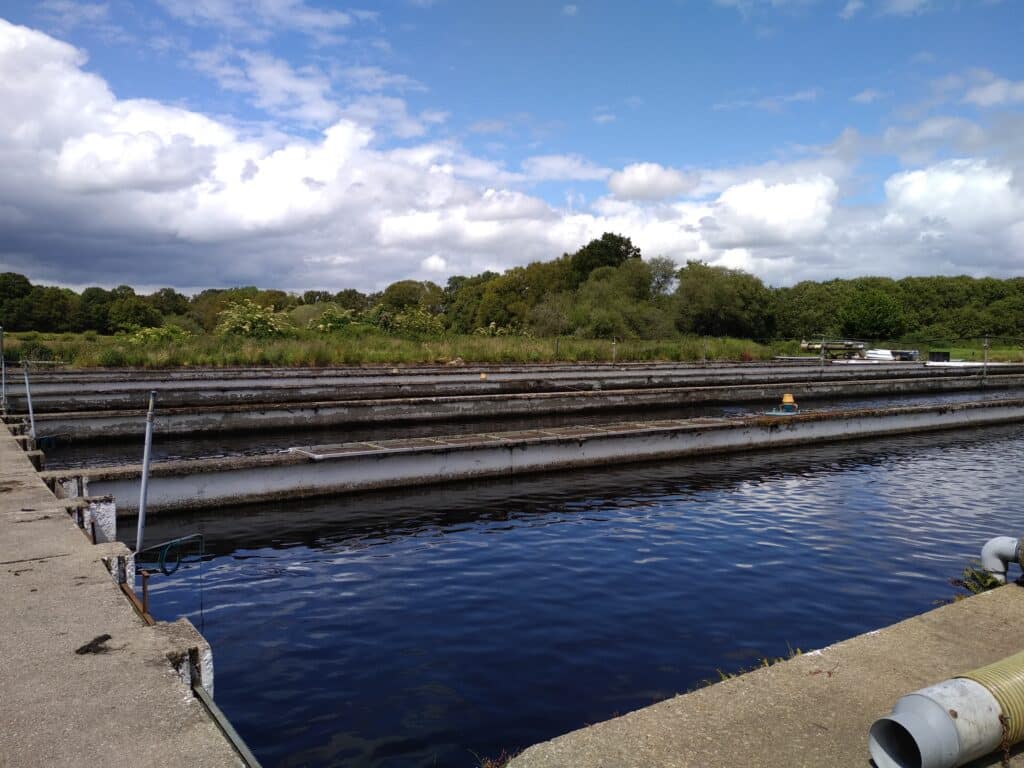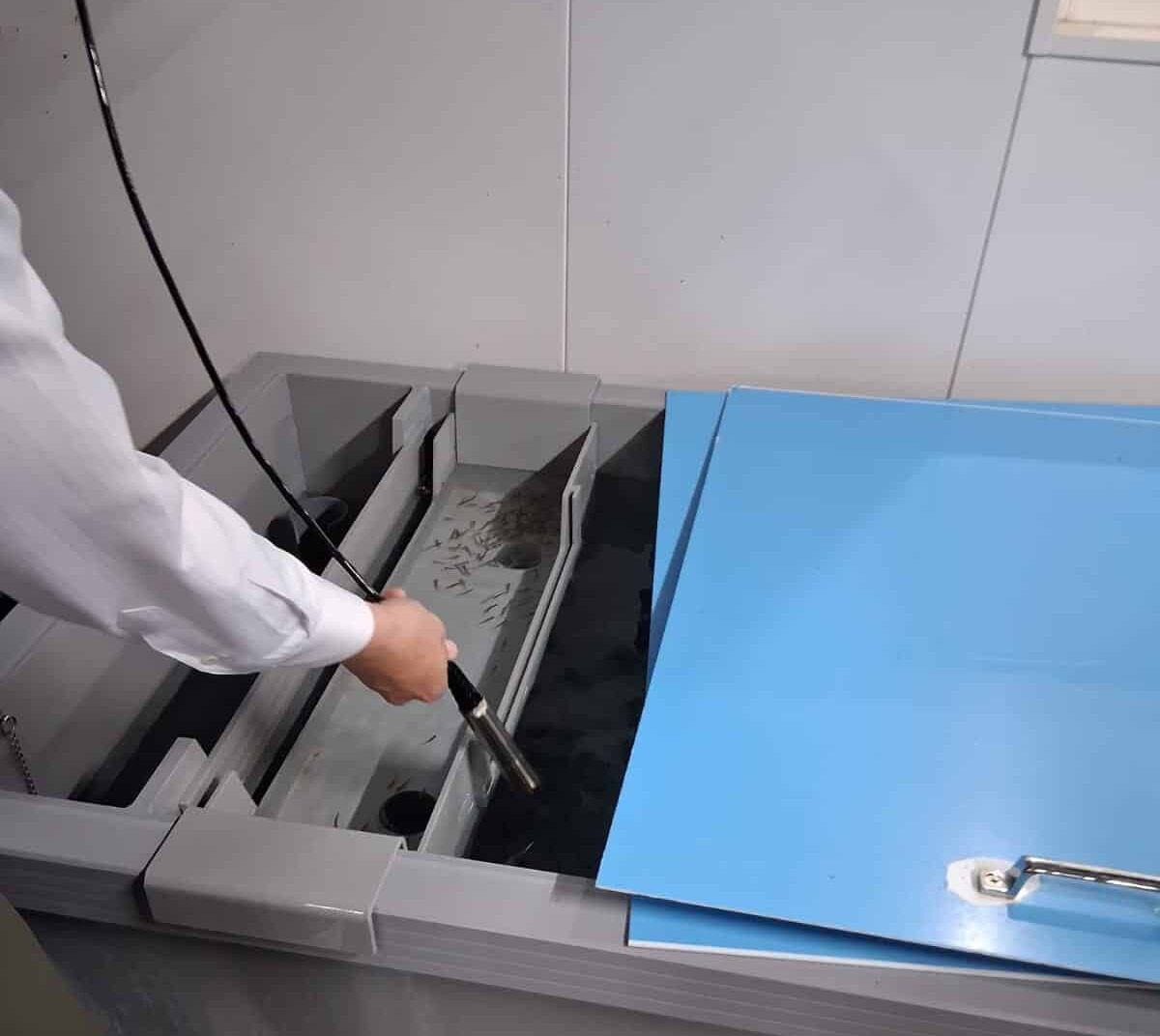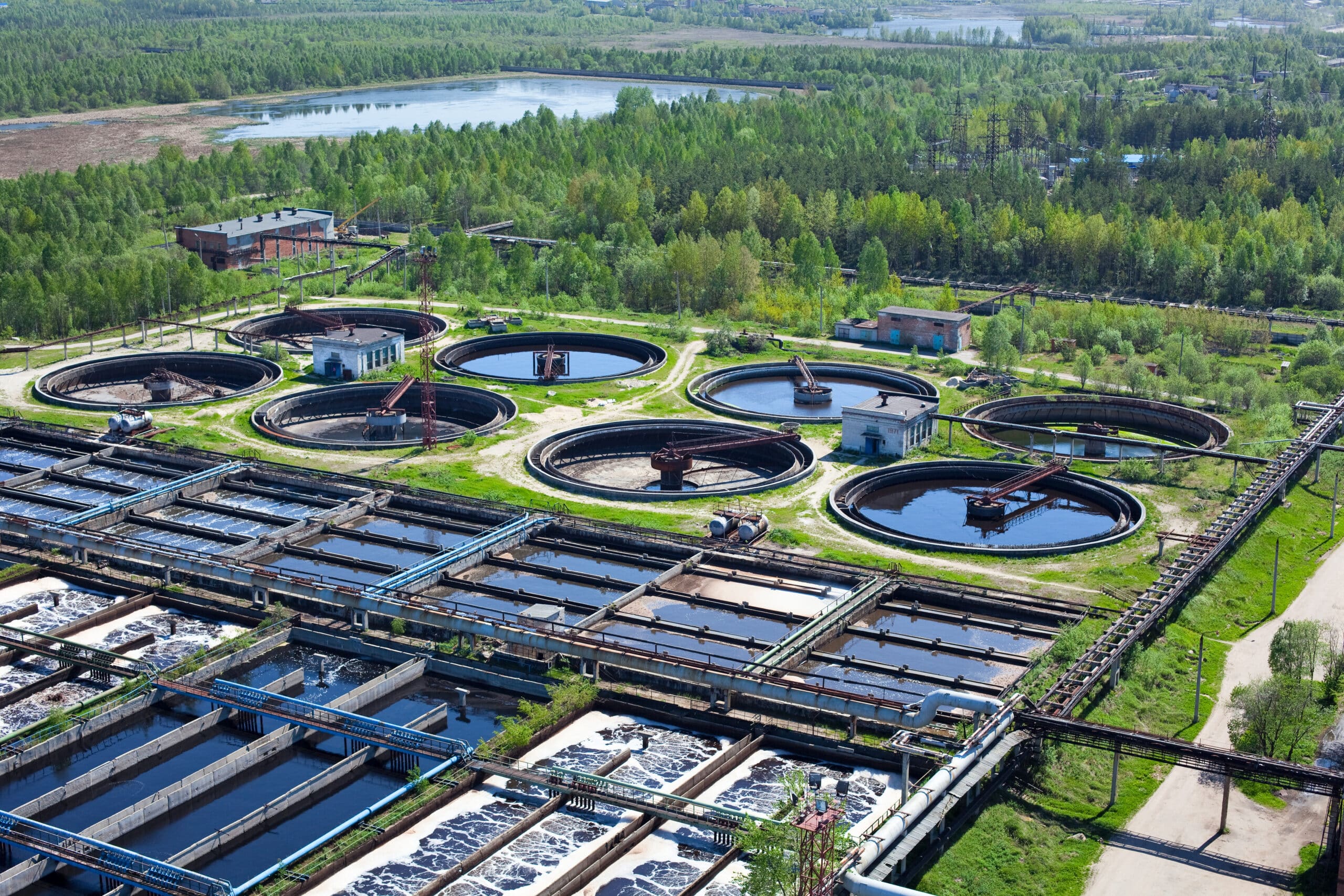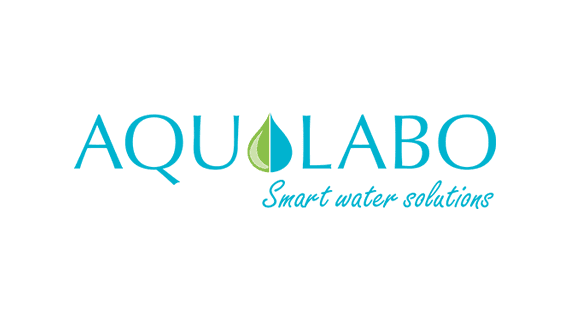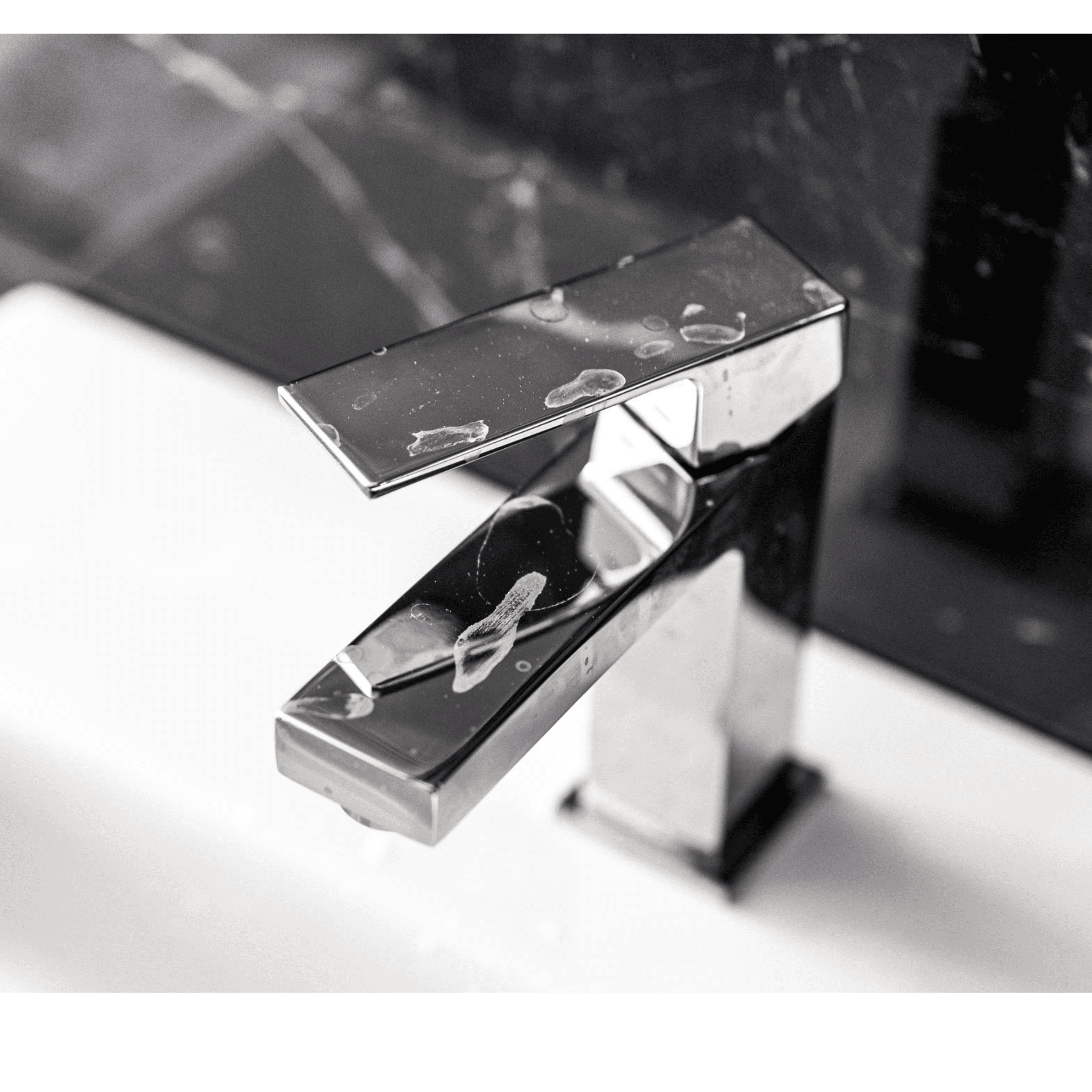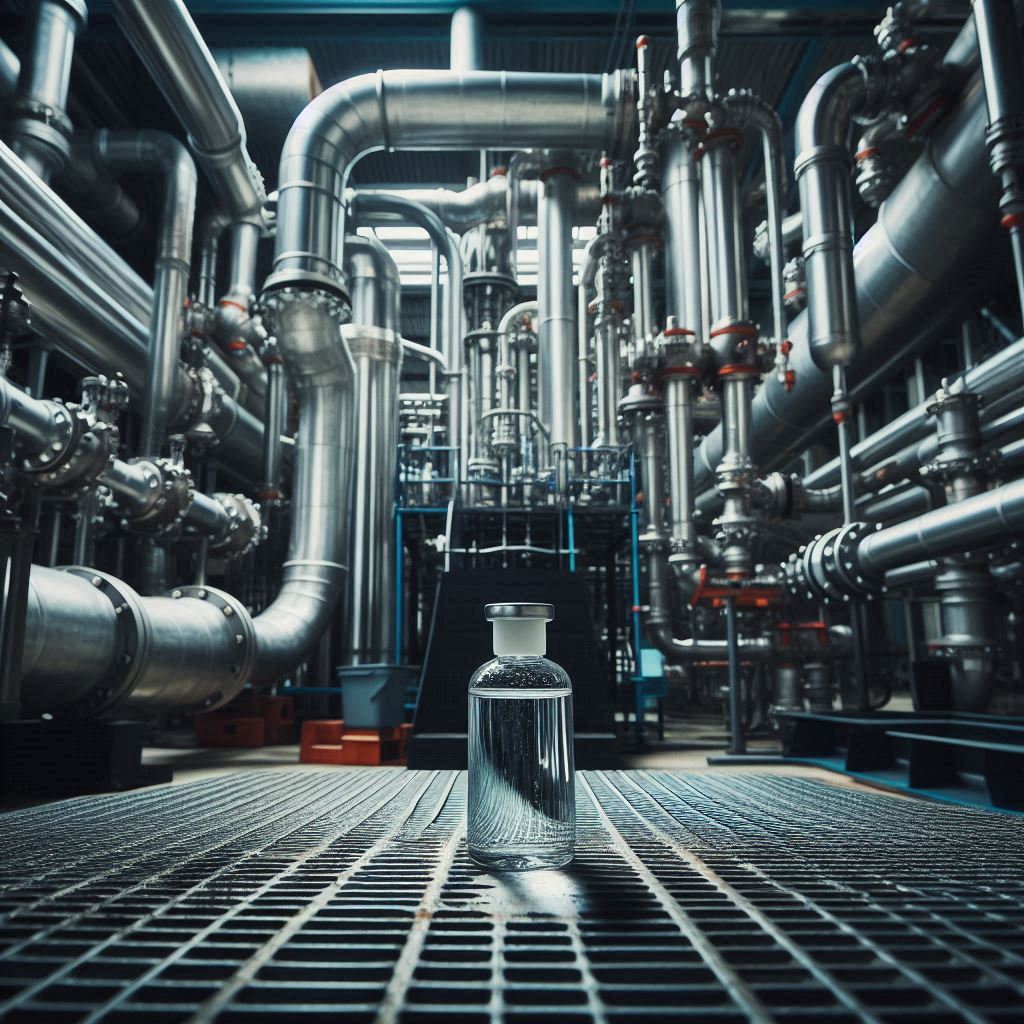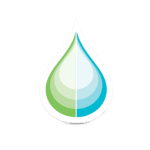Water quality in fish farming : key parameters to monitor
Water quality is one of the essential levers for the success of aquaculture. Even minor variations in certain parameters can have significant impacts, while precise monitoring ensures a favorable environment for fish development.
In this article, we explore the main challenges of water management in fish farming, the key parameters to monitor, and the solutions available to fish farmers to achieve their goals.
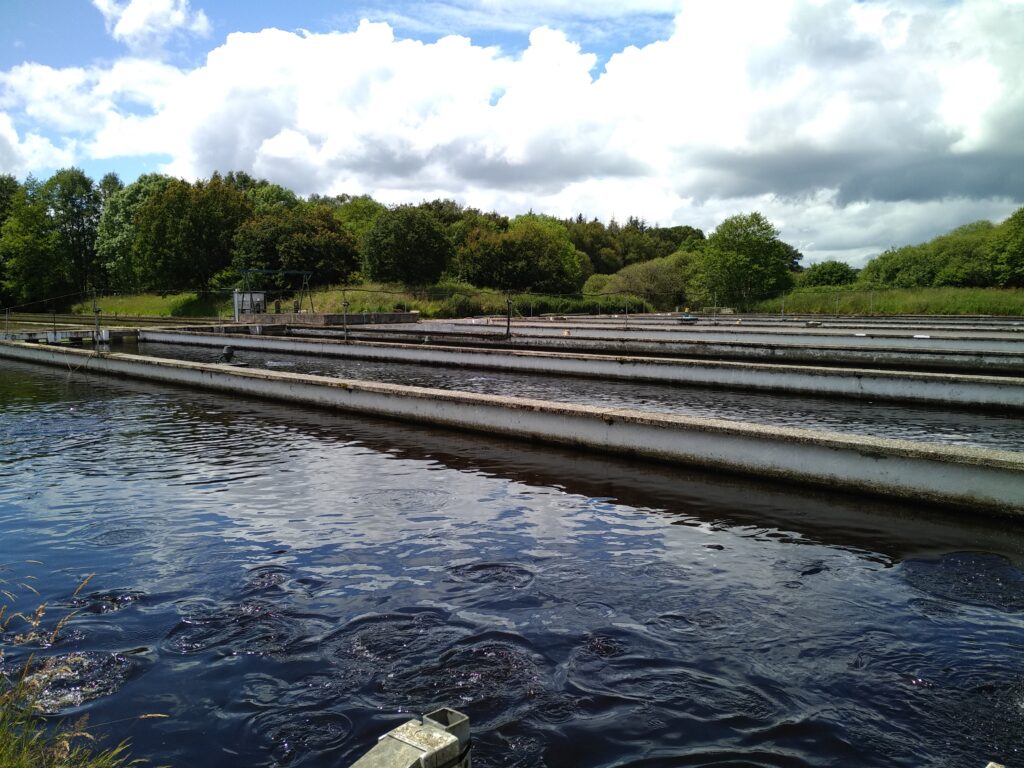
Essential conditions for successful aquaculture
In a fish pond or natural environment, the chemical and physical composition of the water directly influences the growth, reproduction, and resistance of fish. An imbalance can lead to stress, disease, and economic losses. Appropriate management ensures the safety of fish farms and improves their yield.
Water quality also impacts the commercial value of products, their taste, and nutritional value. Monitoring and maintaining high-quality water also ensures compliance with health standards and limits environmental impacts, particularly from discharges.
Fish farming in natural environments: monitoring adapted to ecosystems
When farming is carried out in ponds, lakes, or regulated rivers, water quality monitoring presents specific challenges. Here, farmers must deal with less controllable environmental parameters.
Monitoring aims to preserve a global balance favorable to fish while minimizing the activity’s impact on the ecosystem. This requires regular observation of natural waters and adaptation of practices to local conditions.
Why continuous monitoring of water quality in aquaculture matters
Continuous monitoring makes it possible to detect potential imbalances early and act before they affect fish or infrastructure. This anticipation reduces mortality risks, optimizes the use of resources (oxygen, feed, energy), and improves profitability.
Automation with sensors and connected tools offers fish farmers real-time visibility of their ponds. It also simplifies data traceability, now crucial to meet certification requirements and reassure consumers. Regular monitoring therefore improves animal welfare, ensures better product quality, and contributes to sustainable aquaculture.
Water quality in fish farming: key parameters for fish welfare and growth
Measuring and monitoring dissolved oxygen
Dissolved oxygen (DO) is subject to daily fluctuations. Its concentration depends on water temperature, species requirements, and light levels that drive aquatic plant photosynthesis. Oxygen deficiency weakens fish, causing stress, reduced appetite, slower growth, and greater disease susceptibility.
Monitoring temperature in aquaculture
Water temperature is a central parameter, directly influencing metabolism, growth, and reproduction. A significant deviation from the optimal range for each species weakens immunity, promotes disease, and can lead to mortalities.
Monitoring pH and managing water alkalinity
pH monitoring ensures a safe environment: too low encourages corrosion and toxin formation, while excessive alkalinity can limit biological processes. Alkalinity reflects the water’s capacity to neutralize acids and stabilize pH despite external inputs. This buffering capacity protects aquaculture from fluctuations and secures a balanced environment essential to fish welfare and development.
Monitoring conductivity and mineral salts
Conductivity reflects dissolved mineral salt content. It helps evaluate ionic quality and detect imbalances from evaporation, feed inputs, or discharges. Low conductivity indicates mineral deficiency, while excess may harm fish and disrupt biological balance. This indicator guides water management and mineral supplementation.
Turbidity analysis in aquaculture
Turbidity measures suspended particles such as sediments, algae, or organic matter. High turbidity reduces light penetration, limits photosynthesis, and decreases dissolved oxygen. Excessive turbidity may hide pathogens and complicate water treatment.
Redox potential measurement
Oxidation-reduction potential (Redox) provides information on the water’s ability to sustain chemical reactions. It reflects the overall balance and capacity to remain healthy. Too low favors undesirable bacteria, while too high indicates excess oxidants, harmful to fish.
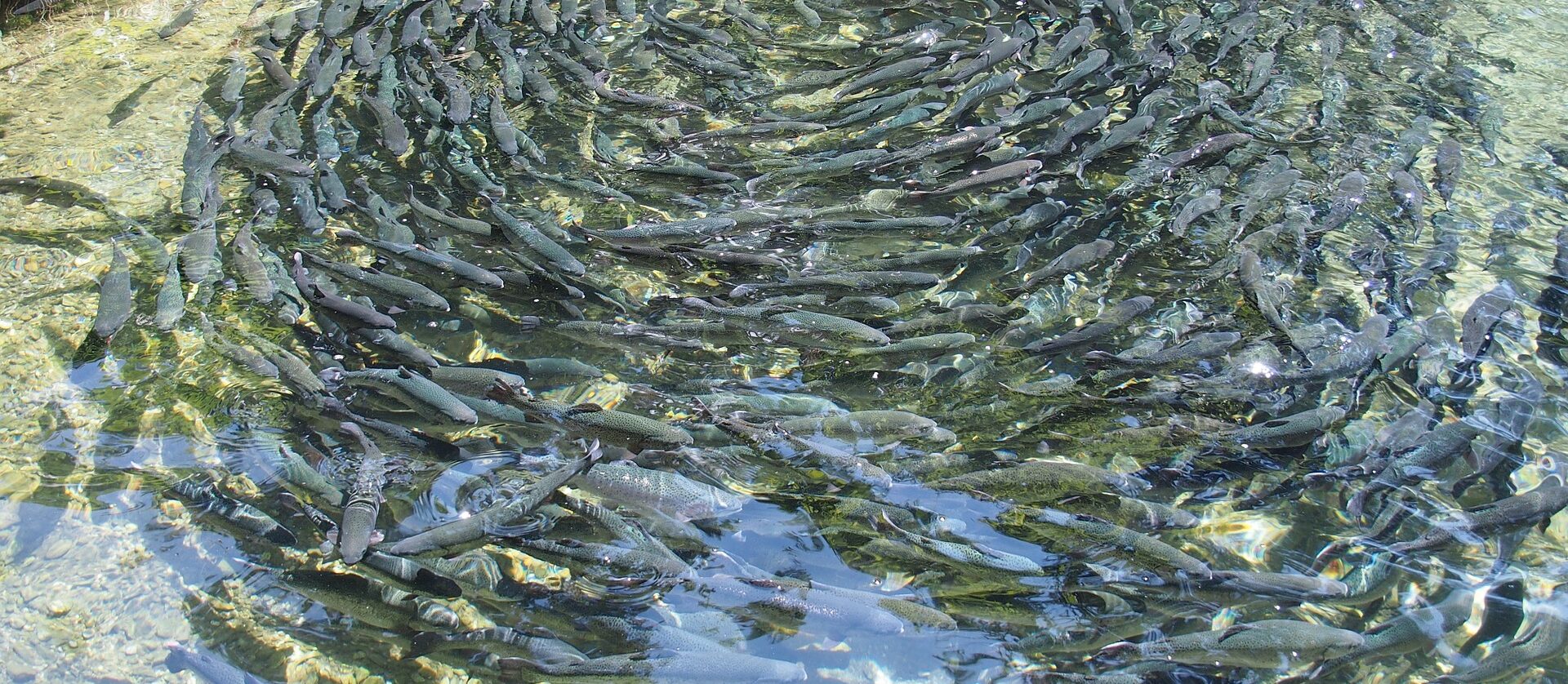
How to effectively monitor pond water quality
Spot measurements with portable kits
Test kits provide quick, reliable results directly on-site. They are easy to carry and supply essential information to adjust practices daily.
Multiparameter sensors for continuous monitoring
Digital sensors continuously track multiple parameters such as pH, oxygen, temperature, or turbidity. Connected to ponds, they transmit accurate data and immediately alert in case of abnormal variation.
Connected tools and remote pond management
Remote monitoring systems centralize measurement data and give farmers a global view of their ponds, wherever they are. This approach improves traceability, responsiveness, and farm optimization.
Aqualabo solutions for aquaculture monitoring
For over 20 years, Aqualabo has supported aquaculture professionals with high-performance instruments designed for use in laboratories, fixed installations, or directly in the field. Our range covers both spot checks and continuous monitoring systems.
Specific equipment for aquaculture and fish farming
ACTEON 5000 Multiparameter
The ACTEON 5000 is a fixed multiparameter transmitter for continuous water quality monitoring. Versatile, it accepts a wide range of digital sensors and provides a clear real-time display.
MODULE 4001 communication unit
The MODULE 4001 is a multi-channel power and communication unit with Modbus connectivity. It can connect up to five Ponsel digital sensors to any system equipped with an RS485 Modbus input.
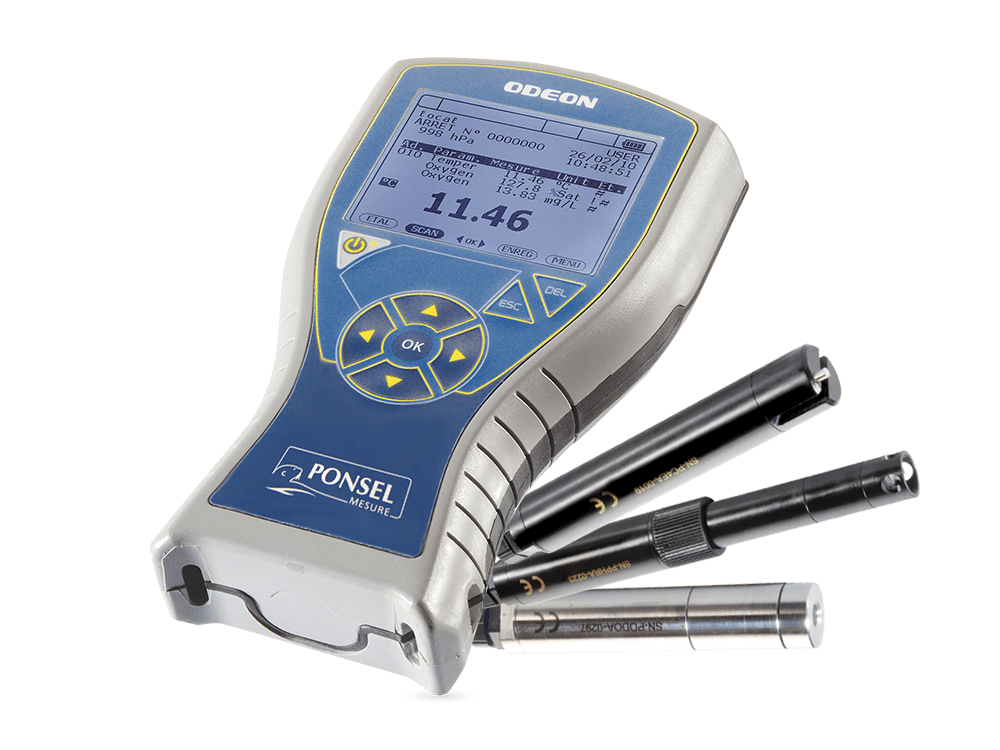
Portable multiparameter devices : ODEON
ODEON Multiparameter Portable
The ODEON is a portable multiparameter instrument (IP67) that is robust, reliable, and flexible. It measures up to 7 physico-chemical parameters with DIGISENS sensors:
Portable single-parameter devices : NEON
The NEON series includes different models: pH meters, oximeters, conductivity meters, and sludge blanket detectors. All are compact, waterproof, and user-friendly, with a storage capacity of 30,000 data points.
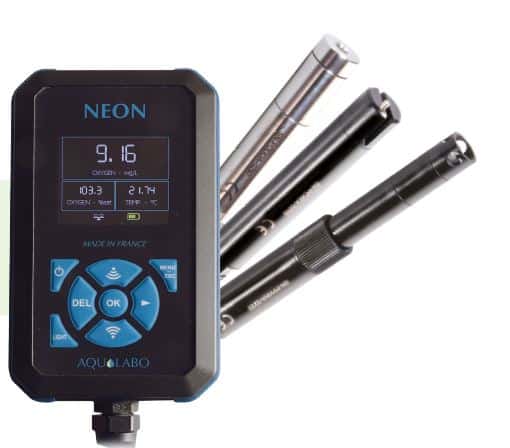
NEON PHEHT
The NEON PHEHT accurately measures pH, Redox, and water temperature.
NEON OPTOD Portable Oximeter
The NEON OPTOD portable oximeter uses optical luminescence technology to measure dissolved oxygen. It includes a barometer and allows smooth data transfer via Wi-Fi.
NEON C4E Portable Conductivity Meter
The C4E model measures conductivity, salinity, and water temperature.
NEON VB Portable Sludge Blanket Detector
The NEON VB is designed to detect sludge blanket levels in settling tanks.
NEON NTU Portable Turbidimeter
The NEON NTU is a portable turbidimeter based on nephelometry (ISO 7027). It measures turbidity (NTU or FNU), turbidity in mg/L, and water temperature.
Connected autonomous solution: AquaConnect’
AQUACONNECT IoT LoRaWAN solution
The AquaMod is our innovative IoT solution for water quality monitoring. Its compact wireless LoRaWAN module connects to digital sensors to transmit real-time pH, dissolved oxygen, temperature, and other key parameters.
Aquaculture rapid test kits
Aqualabo test kits provide fish farmers with a practical solution for quickly checking water quality in the field. They measure essential parameters such as hardness, alkalinity, and pH.
Water quality in fish farming
In fish farming, water quality monitoring is an essential condition for sustainable and efficient production. Technological advances now allow us to offer ultra-connected solutions for precise, continuous monitoring.
Discover Aqualabo solutions today and request a personalized quote to optimize monitoring of your installations.
